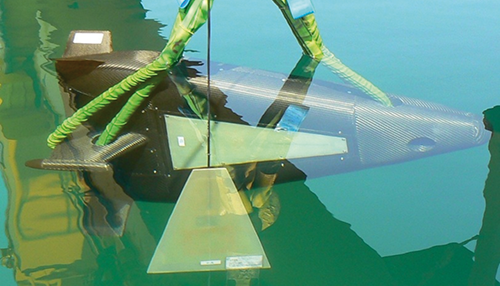BioStruct
Manufacturing process for bio-based fibre-reinforced composite parts for structural applications


Smart Manufacturing, Materials
To address the current challenges associated with using biocomposites in structural components and broaden the scope of applications for bio-composites, the project has outlined specific objectives and corresponding actions:
The BioStruct project, a European initiative, is dedicated to developing manufacturing processes for bio-based fiber-reinforced composite parts in structural applications. With a budget of 8 million euros over three years, the project brings together 10 partners. In addition to end users, the consortium includes partners from automation, machine building, measurement technology, material manufacturing, and simulation software to comprehensively cover all aspects of development. The consortium has been carefully selected to cover all key components necessary to demonstrate high-precision manufacturing of biocomposite parts.
The project anticipates achieving predictable properties and consistent quality through enhanced accuracy and additional control loops in the manufacturing process. The BioStruct project will demonstrate these advancements through two distinct use cases, focusing on wind energy and boat-building applications. These demonstrations aim to establish technical feasibility and attain a Technology Readiness Level (TRL) of 7 for the manufacturing technologies applied to Full-size rotor blade and Ship hull with spars.
Development of Material models for composites’ draping and curing including experimental verification; Integration of Simulation tools for part design; Optimization of demonstrator part designs; Creation of LCA data inventory and estimation of economic and environmental impact.
PROFACTOR GMBH | ABELE INGENIEURE GMBH | REPARACIONES NAUTICAS AMURA SL | BLADEWORKS SRL | FUNDACION CIDETEC | ENGINSOFT SPA | IDEKO S COOP | LUMOSCRIBE LTD | NOMA RESINS SP | ASSOCIATION TECHTERA AUVERGNE RHÔNE ALPES
Co-funded by the European Union’s Horizon Europe research and innovation programme under Grant Agreement No 101136335 | Call identifier: Topic: HORIZON-CL4-2023-TWIN-TRANSITION-01-02

36 months
January 2024 - December 2026
PROFACTOR GMBH
Vito Primavera
10

Some of our competences in research and technology transfer

Research project
Production of components made of composite material, equipped with wireless communication systems capable of operating correctly in environments hostile to radio frequency.

Research project
The VOLPE project aims to engineer and industrialize an innovative optoelectronic instrument to detect explosive compounds in volatile form that can be integrated with commercial systems for screening hand luggage, and capable of operating independently.
Research project
YOGA develops a semiautomated and standardized platform targeting clinical laboratories for tissue characterization by biopsy when very little material is available.